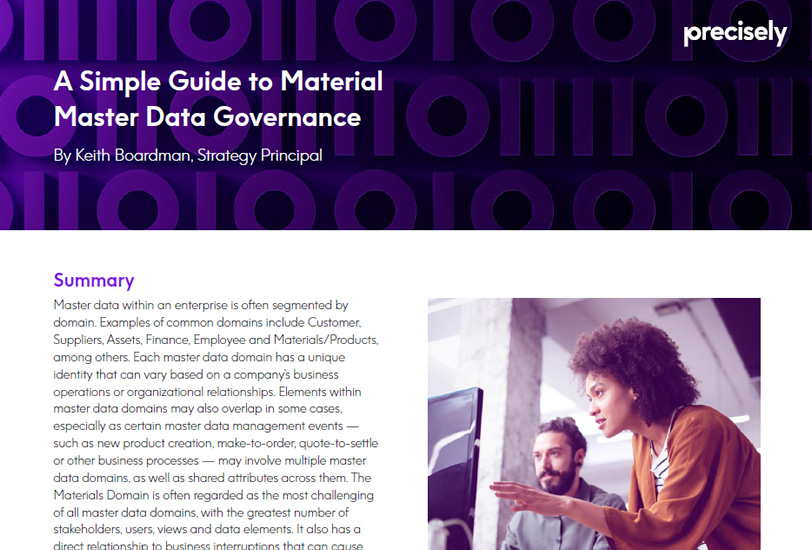White Paper
A Simple Guide to Material Master Data Governance
Master data within an enterprise is often segmented by domain. Examples of common domains include Customer, Suppliers, Assets, Finance, Employee and Materials/Products, among others. Each master data domain has a unique identity that can vary based on a company’s business operations or organizational relationships. Elements within master data domains may also overlap in some cases, especially as certain master data management events — such as new product creation, make-to-order, quote-to-settle or other business processes — may involve multiple master data domains, as well as shared attributes across them.
The Materials Domain is often regarded as the most challenging of all master data domains, with the greatest number of stakeholders, users, views and data elements. It also has a direct relationship to business interruptions that can cause a severe impact. This paper discusses the Materials Domain in terms of its overall identity, common challenges and data governance indicators.
Common challenges of the materials domain Master data domains can be characterized as having push/ pull or upstream/downstream types of qualities in terms of how data originates and how it creates challenges in an ERP landscape. While some domains exhibit a single consistent characteristic (i.e., push or pull, but not both), the Materials Domain may exhibit either or both characteristics. This duality is possible due to the vast breadth of business uses within the Materials Domain.
A typical ERP system can store many types of material data of different points of origin. Businesses that do not manufacture products, such as those in retail, use materials that have upstream challenges, with the majority of material data originating externally. Companies that design and manufacture products often have intermediate materials and finished goods that exhibit downstream challenges, since their attributes are defined through internal processes, rather than external sources.
Some examples of the nuances that some examples of the nuances that distinguish and frame the business use and challenges in the materials domain include:
- Branded products that originate from a common base product
- Configurable/programmable items
- Bundling of individual items to create a promotional item in retail
- Kitting of individual items to create a maintenance pack
- Transforming raw materials into compounds or alloys
- Packing bulk materials into discrete units
Each of the above scenarios includes business challenges that governance in the Materials Domain must address in order to ensure data and process integrity. In implementing any governance initiatives, organizations must assess which processes and attributes should be the focus of their efforts to meet specific business needs.
This paper explores the aspects of master data governance that apply universally to the materials domain.
